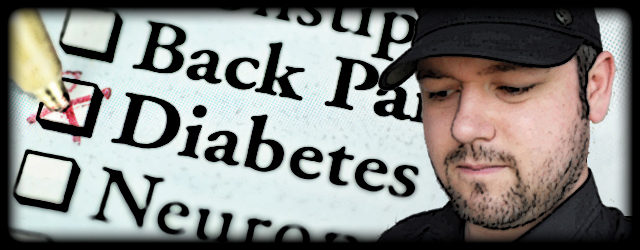Much has been said about rapid insulin and the positive benefit it has had on diabetic control over the last decade. Background – or long-lasting insulin – also plays a part in maintaining a complex balancing act.
The human body produces a constant flow of its own glucose called glycogen. This glycogen production is normally counterbalanced by the pancreas; which produces just enough insulin to break down the glycogen – for normal people, anyway.
A type 1 diabetic has no natural means insulin production to counterbalance the glycogen production – so we need to inject insulin into our bloodstream. In addition to injecting rapid insulin, diabetics can inject long-lasting, slow release insulin. This background insulin lasts up to 24 hours (rapid insulin lasts up to 4 hours). Its main purpose is to assist in balancing the body’s natural glycogen production.
When I was diagnosed with type 1 diabetes I was put on a set dose of rapid insulin (Novorapid) and background insulin (Levmir). As previously documented in this blog I quickly worked out my carbohydrate to rapid insulin ratio, thus improving control of my glucose levels.
Despite this breakthrough I was finding that even when the rapid insulin was not present in my bloodstream – after a long sleep, for example – I needed to consume 20 grams of carbohydrate every few hours to prevent my levels dropping too low. I eventually discovered it was because my background insulin dose was too high.
During a concert one evening I easily consumed over 60 grams of carbohydrate – the equivalent of a main meal – over the course of two hours without taking any rapid insulin; my blood levels did not raise above ‘normal’ levels during the whole time.
Standing up for long periods consumes energy, but not to the degree where I’m required to carry a bakery in by backpack! After a brief consultation with the Professor of Diabetes at my local hospital I was encouraged to experiment with by background insulin levels.
My initial dose of background insulin upon diagnosis was 16 units. Every week I would reduce this by 2 units to see how it affected my day-to-day routines. My method was to spread out my meal times so that the rapid insulin would be absent from my bloodstream at certain times of the day – preferably when I was resting.
I would then test my glucose levels every few hours to determine if my levels were still falling without the aid of the rapid insulin. The final test was to eat a zero carbohydrate breakfast – like chicken or scrambled eggs. If my glucose levels continued to fall during the course of my morning routine, then further adjustment was required. I kept this up for a few months.
At present my background insulin dose is 8 units – half the dose set by my diabetic specialist. I no longer need to snack every 2 hours – which has helped with my diet – and I sleep better knowing that I am less likely to get woken up by a hypo.
Over the years, through experimentation, I discovered that less background insulin is needed during hot summer months. In colder weather I increase my doses – though not as high as first prescribed.
The pay-off is that I now have to take a few units of rapid insulin when consuming some snacks that the background insulin would normally have coped with by itself. But it’s a small price to pay for more freedom and less food!



